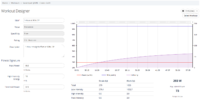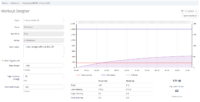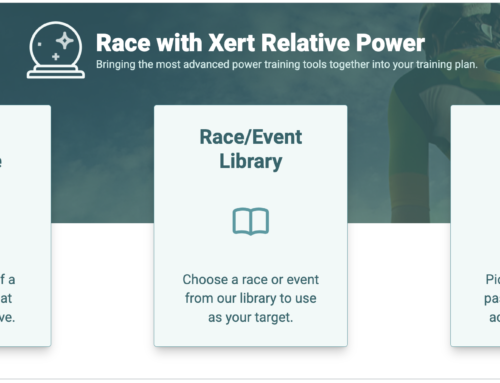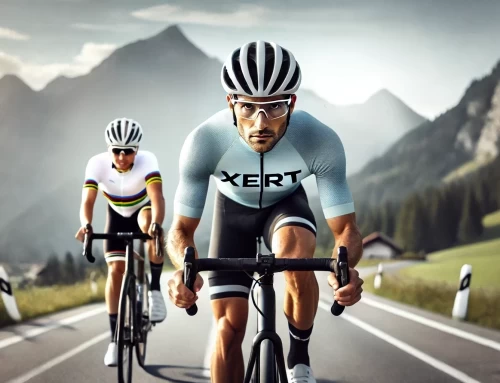Researchers, coaches and sports scientists continue to discuss and evaluate various traditional and alternative forms of training, sometimes quite vocally. There have been some that advocate for sweetspot/threshold training and others that advocate for polarized training. For some athletes, sweetspot training (SST) is too hard, requiring too much concentration whereas for others find it is too easy and are not getting the gains they are looking for. Some get great results whereas other see it as a black hole, where it defeats gains obtained previously. These days, the new thing appears to be polarized training, as the way athletes should be training. But still, there are some that have found this training to be lacking and did not see great results with it.
What’s going on?
For sake of clarity, we’re going to define these modes so that we can make it clear what is being talked about and to put them into context using Xert terminology. 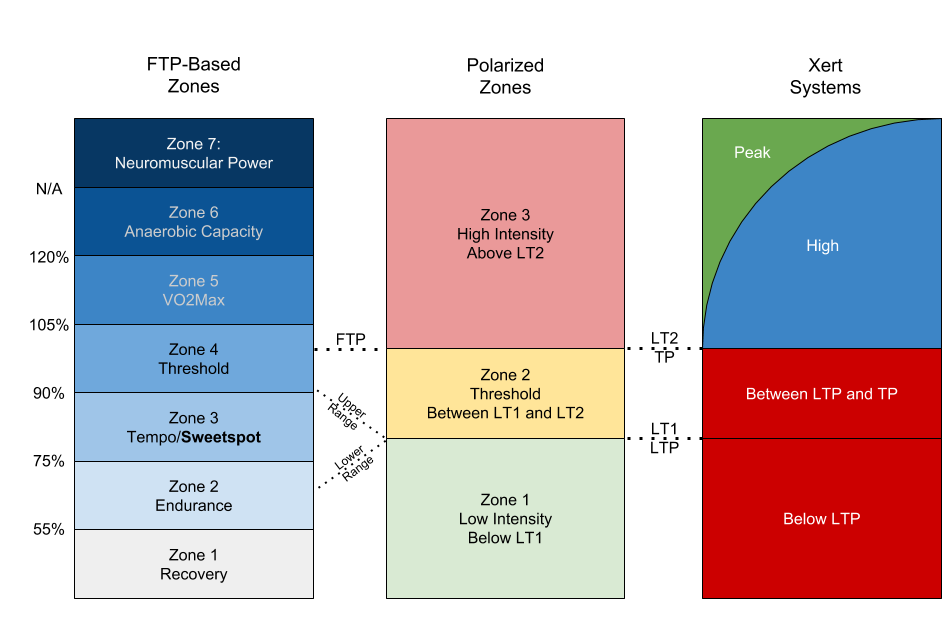
FTP-Based Zones
In this post, we’re going to use a 7-Zone %FTP-based system to characterize SST. As you can see from the above chart, sweet spot is defined as training at the upper Zone 3 / lower Zone 4 between 83-90% of FTP, although there are others that use alternatives ranging from 75% to 97% FTP. Threshold training is defined between 90-105% of FTP. We also define FTP to be roughly equivalent to LT2, from a zone definition standpoint (see below).
Polarized Zones and Training
Polarized zones use physiological concepts to define zone boundaries. Zone 1 is any intensity below your first lactate threshold or LT1. The most common definition of LT1 is the intensity at which your lactate concentration increases by more than 1 mmol above baseline levels. During exercise, this is often seen as the intensity where breathing rate starts to noticeably increase and speaking just starts to become affected.
Zone 3 is any intensity above your second lactate threshold or LT2. The most common definition of LT2 is the highest intensity where lactate levels do not continuously rise. This is sometimes referred to as Maximal Lactate Steady State or MLSS. In some definitions, LT2 is the intensity at which lactate concentrations are 4 mmol although this is often used as a convenience since MLSS often occurs near this level … but not always.
Zone 2 is any intensity between Zone 1 and Zone 3. This is referred to as the Threshold zone.
Polarized training suggests that 80% of your training should be in Zone 1 and 20% of your training should be in Zone 3, where this 80:20 rule applies to the time you spend performing training, i.e. the ratio of low intensity training to high intensity training. It is polarized because no or very little threshold training is prescribed.
Xert’s Three Systems
Xert doesn’t use the concept of zones directly. Instead, it uses the concept of Focus and work/strain allocation ratios.
Recall that since an athlete’s power curve can be determined with three parameters – termed a fitness signature – an athlete’s ability to perform according to their power duration relationship is thus governed by three systems – peak, high and low – and all training will integrate into one more of these systems. Xert uses strain to quantify overall training rather than work performed (i.e. time in zone). Whether it be VO2, neuromuscular, aerobic, anaerobic, etc., strain can be quantified as work performed relative to MPA and the strain of exercise (and thus the benefits of fitness gains from adaptation) must be allocated to one or more of these three systems. The three Xert systems act integratively across many physiological systems.
Strain below Threshold Power (TP) is considered Low Intensity Strain and strain above TP is considered a combination of High and Peak Intensity Strain. TP is roughly equal to LT2 and FTP for all intents and purposes.
Lower Threshold Power (LTP) is a modeling artifact that indentifies the lowest level TP will reach when all Endurance Energy stores are depleted. In practice, LTP appears to mimic LT1. From a modeling perspective, LTP corresponds to the point at which Endurance Energy is not being depleted and thus does in principle align with LT1 which characterizes the point at which anaerobic energy systems begin to engage in supplying energy to working muscles. Anaerobic energy is supplied by your carbohydrate stores exclusively and this is the main source of Endurance Energy.
Sweet Spot Training
SST aligns closely with Threshold training in the Periodized method. It is often performed as 2×20 minute interval workouts, targeting the sweetspot zone between 83% and 90%FTP, although some see it starting as low as 75% FTP and ending as high as 97% of FTP. The concept behind using SST is that it provides the right amount of intensity for the greatest benefit in the shortest amount of time invested in training. Generally the upper end above 90%FTP SST workouts are taxing and require lots of concentration to complete whereas those on the lower end, below 83%FTP, are easier to perform. Many training plans that athletes purchase often incorporate SST during the base phase of an athlete’s training with the intention to substitute traditional long, slow distance (LSD) workouts with shorter ones based on SST.
This principle has come into dispute recently with research published by Dr. Stephen Seiler described here by our very own Dr. Stephen Cheung: Polarized Training and Stephen Seiler. What the polarized method advocates is to avoid sweetspot training rather than intentionally train there, the complete opposite of what has been advocated! It is argued that SST doesn’t provide the training value and in fact can compromise your training. It is termed the black hole of training where athletes make the mistake of training too hard during easy sessions and training too easy during hard sessions.
So.. Which is it? Should I do SST or not?
The answer is: it depends. When we look at things through the lens that Xert provides, we can start to see where things can get a bit fuzzy. Let’s take two athletes and see how they would fare doing SST:
In the table above, we have two athletes: Athlete 1 is an accomplished Elite endurance athlete and Athlete 2 is new to Endurance cycling and is a natural sprinter.
As the numbers show, Athlete 1’s range for SST is entirely below their LTP. This means that their SST training would fall into polarized zone 1. (SST would actually fit into a polarized training plan.) The 90% SST workout provides 72XSS of strain. For the 1 hour workout at just under 90% LTP, XSS would be essentially identical (73XSS). Therefore, for athletes with very high LTP values relative to their TP, sweetspot training works well for them since it ends up being polarized Zone 1 and not Zone 2 training. If they trained at lower zones, it may in fact be too easy.
For Athlete 2, things are quite different. SST workouts are entirely above their LTP across the whole range. This athlete would need to tap into greater Endurance Energy stores to complete this workout and it would become more and more difficult to complete as the workout wore on as a result, likely causing the athlete to abandon the workout, even at the low end of the range. SST falls entirely into the black hole region (easy workouts are too hard) of threshold training when it comes to using the polarized training method. Indeed, if the athlete was to employ a polarized approach and train at 90% of their LTP, they would obtain a marginally less overall training score (62XSS). The athlete could achieve the same benefit as the SST workout by merely extending the 1 hour at 90% LTP by about 10 minutes. The 70 minute workout for this athlete would fall into the polarized training method, be easier to complete, would reduce demand on endurance energy stores (carbohydrates) and provide equivalent XSS benefit as the 2×20 SST workout @90%FTP.
Training Goals
Another factor to consider is the overall goal of the training. Depending on the Athlete Type you are training towards, will determine what type of training is going to work best for you. In the majority of events cyclists compete in, some level of supra-threshold demands exists and Athlete Types fall into those with a lower Focus Duration. This means that high-intensity training is going to be needed in order to optimize fitness for these events. Hence, a polarized training method, one that combines the intensities needed for the event together with longer, endurance sessions that don’t compromise the high-intensity training is best.
But if the goal is a straight, flat time-trial, where supra-threshold efforts are minimal and where TP is the main determinant of the outcome, polarized training may not be optimal if the high-intensity training is too high. Training near your TP for those events that demand the highest TP is what will work best for these events. Training that increases your High Intensity Energy and/or Peak Power, via high-intensity workouts according to Xert’s Focus and allocation ratios, will not be as valuable. Hence, threshold training is what’s best in these situations.
On the far end, where athletes are training for full triathlons for example, over courses that are predominantly flat, polarized training using the 80:20 rule may in fact pose further challenges. For these ultra-endurance events, the primary determinant of performance is your LTP and raising it is your primary goal. Polarized training will not likely be optimal in preparing athletes for these events since the high-intensity 20% training is used to improve High Intensity Energy and Peak Power (and to some degree TP) and LTP is not improved with high intensity training. In fact, too much high intensity training can be a detriment and can negatively affect LTP.
Lastly and worthy of note, is that if the polarized training zones are not properly identified, they can wreak havoc in a training plan that intentionally avoids certain types of training. So if Zone 1 is determined to be much higher than the athlete’s real LT1, the athlete will be performing their Zone 1 training in Zone 2, the black hole zone, which they may find too difficult to do and then find it impacting the days when they need to perform high intensity workouts. Care must be taken when following a polarized training method that your LT2 and LT1 are correctly identified.
How Polarization Works in Xert
Firstly, Xert is the only platform available as of this writing, that establishes an estimate of your Lower Threshold Power using power data and allows workout intervals to be defined as a percentage of this value. Following workouts that are based on LTP targets, ensures you’re not training too hard, i.e. avoids the black hole, by reducing the amount of training you spend above LTP. Xert is not entirely polarized since training variety is an important element to training success, but you will find many of the Endurance workouts and the rest intervals in workouts to be defined at or just below LTP.
Secondly, Focus is a metric that quantifies efforts above threshold. By definition, any Focus Duration that is less than 60 minutes, represents an effort that is above TP. Therefore, when your Training Program enters the Build phase, you’ll start seeing the Focus of your training move towards your chosen Athlete Type. This, in fact, is an increase in polarization as the Training Program progresses towards your target event. For instance, an Athlete Type such as Breakaway Specialist, a great Athlete Type to choose if you are planning on doing road races, has a Polarity Ratio of roughly 80:20.
Lastly, the Xert Adaptive Training Advisor will prescribe Endurance training when your high and peak recovery loads are too high (yellow Training Status). You will often see yellow Training Status a day or two following a hard, high-intensity interval workout where you are Very tired (red). This indicates that your Low intensity system has recovered and is fresh enough for more training but your High/Peak intensity systems still need recovery before higher intensity can be performed. This division of low intensity with high+peak, allows the system to give you enough recovery time to ensure your next high intensity workout will be successful and helps avoid failed workouts. This, in essence, polarizes your training since workouts are either high intensity or endurance (low-intensity) depending on your Training Status.

If you choose Triathlete as your Athlete Type, all your training is Endurance aiming to boost your LTP as the main goal.
Conclusion
Sweetspot training, when used by some athletes and for the right purposes, provides an excellent way to train. However, for many athletes, SST amounts to the black hole of training, where it’s too hard/short to provide endurance training benefits. Many athletes fall in-between, where depending on the specific intensity the SST falls into and its relationship to LTP and their training goals, will determine whether it is a wise training choice or not.



